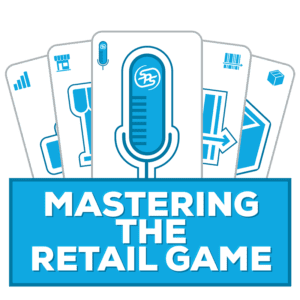



Synopsis:
Managing item data for hundreds or thousands of products isn’t easy. Every retailer and vendor has a different idea of how much product information is sufficient to satisfy their requirements. Each organization also wants the data in their own unique format and language. Trying to maintain all that information can get real complicated, real fast.
Streamlining item data management is not only achievable, it can be extremely helpful for the retailers, the vendors and even the consumer. Standardized item data is easier to disseminate across sales channels. Detailed product information helps consumers make decisions on what to buy, especially when it comes to digital channels.
Bekki Windsperger, a Consumer Product Goods (CPG) industry expert with more than 30 years of experience, has spent much of her career optimizing and automating supply chain and item data management processes. She had some advice to offer on streamlining item data management for businesses at any point in the supply chain.
On this episode:

Bonnie Keyworth, Senior Solutions Strategist, SPS Commerce
With over twenty years in the complex world of EDI, Bonnie Keyworth adds value to retailers and suppliers by designing solutions for a variety of ERPs and for any transaction required in their supply chain. As a Senior Solution Strategist with SPS, she enjoys the variety of projects and the new challenges each one presents. Working closely with customers on common goals is a top strength for her, which drives her toward success with every endeavor.

Bekki Windsperger, Senior Customer Strategist, SPS Commerce
Bekki Windsperger is a Consumer Product Goods (CPG) industry expert with more than 30 years of experience in developing and supporting Business to Business (B2B) integration, with a focus on optimizing and automating Supply Chain and Item Management business processes. Before she came to SPS Commerce, she held positions at Supervalu, Pillsbury and Best Buy.In 2017, she was named as a Supply & Demand Chain Executive “Pro to Know.”
“For every day that the item isn’t available to consumers, you’re losing sales. The faster you get it set up in your system, the faster you can start selling the item.”
Bekki Windsperger
Senior Customer Strategist, SPS Commerce
Episode Transcript
Download PDF
Bonnie Keyworth (BK): Welcome to the Mastering the Retail Game podcast from SPS Commerce, where we explore the new rules of retail and provide real-world advice on how to win by learning from your peers and industry experts.
I’m your host Bonnie Keyworth and today we’ll be talking about setting up new items in your system.
Deciding to carry a new item is just the beginning. It has to be set up and made available for purchase, and every day a new item isn’t ready in your system is another day you’re losing potential sales. But far too often the process can take weeks. Streamlining the new item setup process can shorten that time to just a few hours.
Today we’ll be talking about proven techniques for quick, error-free new item setup with my colleague Bekki Windspberger, Senior Customer Strategist at SPS Commerce. Bekki is a Consumer Product Goods industry expert with more than 30 years of retail experience, leading initiatives where item setup was a critical step. Before she came to SPS, she held positions at Supervalu, Pillsbury and Best Buy.
Welcome to the podcast, Bekki.
Bekki Windsperger (BW): Thank you. I’m glad to be here.
BK: So let’s take a step back here a little bit and talk about what we mean when we say new item setup. Is it exactly what it sounds like?
BW: It is pretty much exactly what it sounds like. Whether you’re a vendor offering a new item or a buying organization looking to carry a new item, you’ve got to be able to mutually identify the item within your systems. The buyer needs to be able to, at a minimum, capture the item identifiers to be used for ordering, price they’ll be charged, product descriptions and other data needed to order the product from the supplier. But there is additional data required to publish the item to a website.
BK: Ah, of course, the complexity begins.
BW: Yes, it does. If the retailer is offering buy online or pick up in store, the consumer will want and expect to know more details before they place an order.
BK: Bekki, please share some examples of the additional data needed for the consumer.
BW: Think about how you as a consumer shops. Depending on what you’re searching for, the information you need or want to make your decision varies significantly. For instance, clothing. At a minimum you want to know the size, the colors, whether it’s women’s, children’s, plus sizes, what is the makeup of the material as well as other product information about the item. But probably most important one or more images so you, the consumer, knows what it looks like.
BK: Right. I’ve even seen some websites that list the height and size of the model wearing an item. What other types of products and industries deal with this?
BW: Well, if it’s a grocery item you’d want to know the size of the item. Is it a 17-ounce jar or a five-ounce jar? Nutritional information and probably really important to some people, does it contain any allergens such as nuts? When you’re looking for a new laptop, you likely want to know operating system, storage capability, capacity, screen size, RAM and things like processing speeds.
BK: With all these variables per item, what is the typical current process for item setup?
BW: The industry norm is exchanging spreadsheets.
BK: No. Bekki, say it isn’t so.
BW: I’m afraid so. Depending on the buying organization’s systems, they may be able to import the spreadsheet, but it’s still very common that they’re manually keying the information into their systems. That manual data entry can be inaccurate and time-consuming.
BK: Sure. As many know already, where there are manual processes, there is room for error.
BW: Sure. There are some buying organizations that may have a portal where the vendor is expected to manually enter the data. This can be very time-consuming for the vendor and still be error prone. Either way, setting up new items or updating existing items in their system is only as fast as the people managing the process.
BK: How long are we talking about with this process you’re describing?
BW: Well, it could take anywhere from days to weeks to finish the setup, especially if there’s a lot of back-and-forth between the retailer and the vendor trying to get all the information needed and to get it right. For every day that the item isn’t available to consumers though, you’re losing sales. The faster you get it set up in your system, the faster you can start selling the item.
BK: Ooh, and what about latest fashions and fads? Speed must be critical.
BW: That’s for sure. If it’s the latest hot new fad, losing that opportunity can, in the end, cost the buying organization money. Remember how hot the spinners were when they first came out last year or the year before? Buyers couldn’t get enough inventory to satisfy the demand, and those that jumped in late missed the fad and ended up with inventory they had to discount and take a loss on.
BK: Where do the spreadsheets come from? How do retailers even get them?
BW: Well, it can go either direction. The buyer may give the vendor a spreadsheet and ask them to fill it out, or the vendor can provide their own spreadsheet. Wherever the spreadsheet comes from, it’s easy to run into problems.
BK: I imagine so. There’s manual effort on both sides.
BW: The vendor may provide a spreadsheet that also doesn’t have the information the buying organization needs, which of course then results in delays with the back-and-forth. The buyer may ask for information that the vendor doesn’t even have readily available.
BK: What issues should be considered?
BW: Beyond the obvious problems of possible incorrect data, the bigger issue is that, at any one time, the vendor could be dealing with hundreds of different spreadsheets from different retailers, one for each of the buying organizations that they work with. If you don’t have a good process for sending and receiving these files, it gets even trickier. Are you receiving them by mail? Sending them by mail? If so, are they all going to the same email address? Or could they be in one of several different email addresses? What happens if someone goes on vacation or leaves the company? The data just gets lost.
BK: Your mention of managing hundreds of spreadsheets sounds overwhelming. How does one go about making this process easier?
BW: Suppliers should look at automating the exporting of the data from their source of truth for new items and changes. This can streamline operations as well as ensure accuracy, and it saves time and headaches for all parties. In the end, the consumer has the right information.
BK: Well, this is sounding much better. How can buying organizations get started with speeding up and streamlining item data management?
BW: First, everybody needs to realize that item setup is complicated and confusing. It’s probably going to take time to identify who all touches or owns the data and identify all your processes to get it automated, but it’s going to be worth it in the end. You need to adhere to the process. If the expectation is that the vendor provides all data via some automated process or spreadsheet, the buyer should not go back and ask for the same data via another method.
BK: What needs to happen for working with partners?
BW: Well, before the buying organization approaches their trading partners with their new item data setup requirements, they really need to figure out the attributes that are really needed. If you can’t articulate what you need and why you need it, you’re not going to get it. Also, the information needed could vary on whether the item is offered online, in a store or both.
BK: Definitely. When I buy online, I need to know I’m getting the right everything. So I’m more likely to buy from a site that has the most product detail.
BW: Sure. The number of details the consumer needs to trust their e-commerce purchase is much higher and different than the items that they can touch and feel in the store. So you need to gather insight on what customers and consumers are searching for on your website and what information is actually driving them to make the purchase. Take into account that there needs to be a balance, however, between which attributes are required and which could be optional.
If you go in asking for too much information out of the gate, your vendor or supplier could have a hard time finding the details and meeting your requirements. You don’t want them to just enter incorrect data to appease your requirement.
BK: Sure. So if this is new information for our listeners, what do you recommend for integrating this new improved process?
BW: If you’re just getting started, I would recommend a crawl, walk, run approach. What do you absolutely need now? What could you do with later? And what would be nice to have? Prove out your processes on the most essential data first and add more a little further down the road as you’ve refined your process and listened to your customers.
There are various ways to approach it. Maybe start with a specific category or a vendor that has a large number of SKUs or those vendors that have products that change every season. Of course, you can always jump in with both feet and require it from all vendors. No approach is wrong, but you need to be prepared and have the teams impacted onboard.
BK: Are there standards or guidelines that can be helpful for narrowing down the information you need or should include in your requirements?
BW: There are global standards that can be used for item attributes. There’s global product classification, UNSPSC, among others. For example, EDI standards include an 832 catalog used in retail and the 888 which is used in grocery. Another great example is the National Retail Federation has standard color and size codes assigned, which allows for trading partners specifically in the apparel space to have a consistent way to communicate size and colors.
If and whenever possible, try to stick to standards. When you start asking for one-off things, it gets difficult for the suppliers to support each buying organization.
BK: Very understandable as even though these are EDI standards, quote, unquote, we know companies may use elements within that standard vastly different than their partners do. What happens if the data you’re looking for isn’t readily available?
BW: That’s a very good question, and it’s bound to happen. So you need to have a plan to determine workarounds if your trading partners don’t have the data. Do you have someone in your company that’s going to be able to analyze and measure each product that doesn’t have complete dimensions? Will they be entering this data manually? If so, into what system? How will this information be kept up-to-date?
Or maybe it just doesn’t meet your standards. Some vendors don’t have nice photo studios to take the quality of images you require. Are you willing and able to take on that work? If you really want the data, you’re going to have to figure out a way to get it when it’s not available.
BK: Knowing where workarounds are needed is dire. Any last words about new item setup?
BW: This isn’t a one-and-done. In terms of crawl, walk, run, even when you’ve reached your automation goals, the retail landscape is constantly shifting as online purchases increase and product details become more important than ever. The list of potential items and attributes that you and your trading partners should offer to persuade the customer and/or keep your supply chain moving will change and grow over time. Just think about cell phones.
BK: Great example. Those are forever changing.
BW: I recall my husband had one of the first cell phones that came in a briefcase, and you put an antenna on the roof of your vehicle. You couldn’t text, take a picture or surf the internet. Look at what you expect from your cell phones now and the information you look for when upgrading your current phone.
BK: Indeed.
BW: Who knows what technology the future holds? It’s an ever-changing landscape.
BK: Right. I’ve seen websites that offer a try-it-on technology, like eyeglasses. You’re able to virtually see yourself before purchasing just that right product. Well, this has been some great information you’ve shared with our listeners today. Thanks so much for your time, Bekki.
BW: Absolutely. Anytime. Thanks. Bonnie.
BK: Thanks for listening to this episode of Mastering the Retail Game. You could read transcripts of this podcast, review show notes, and listen to other episodes by visiting spscommerce.com/podcast. You can also subscribe through most major podcast streaming services. Join us on the next episode of Mastering the Retail Game for more tips on how to win in the new retail environment. Until then, this is Bonnie Keyworth from SPS Commerce, hoping your new item setup process becomes spreadsheet free.

Mastering the Retail Game
Explore the new rules of retail and get real-world advice on how to win by learning from retail experts and peers in the industry.
LISTEN TO THE PODCAST
 Our TOPPODCAST Picks
Our TOPPODCAST Picks  Stay Connected
Stay Connected













